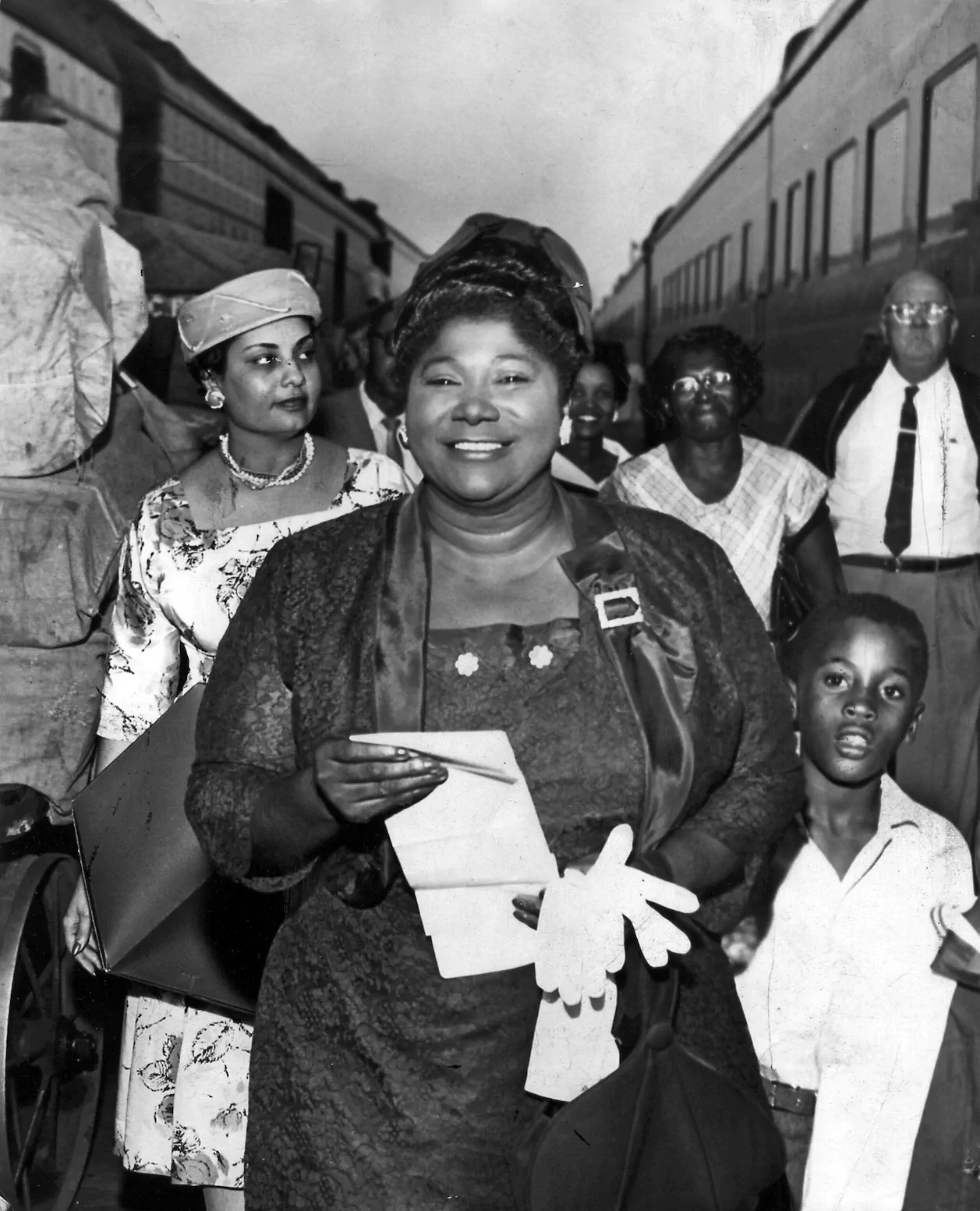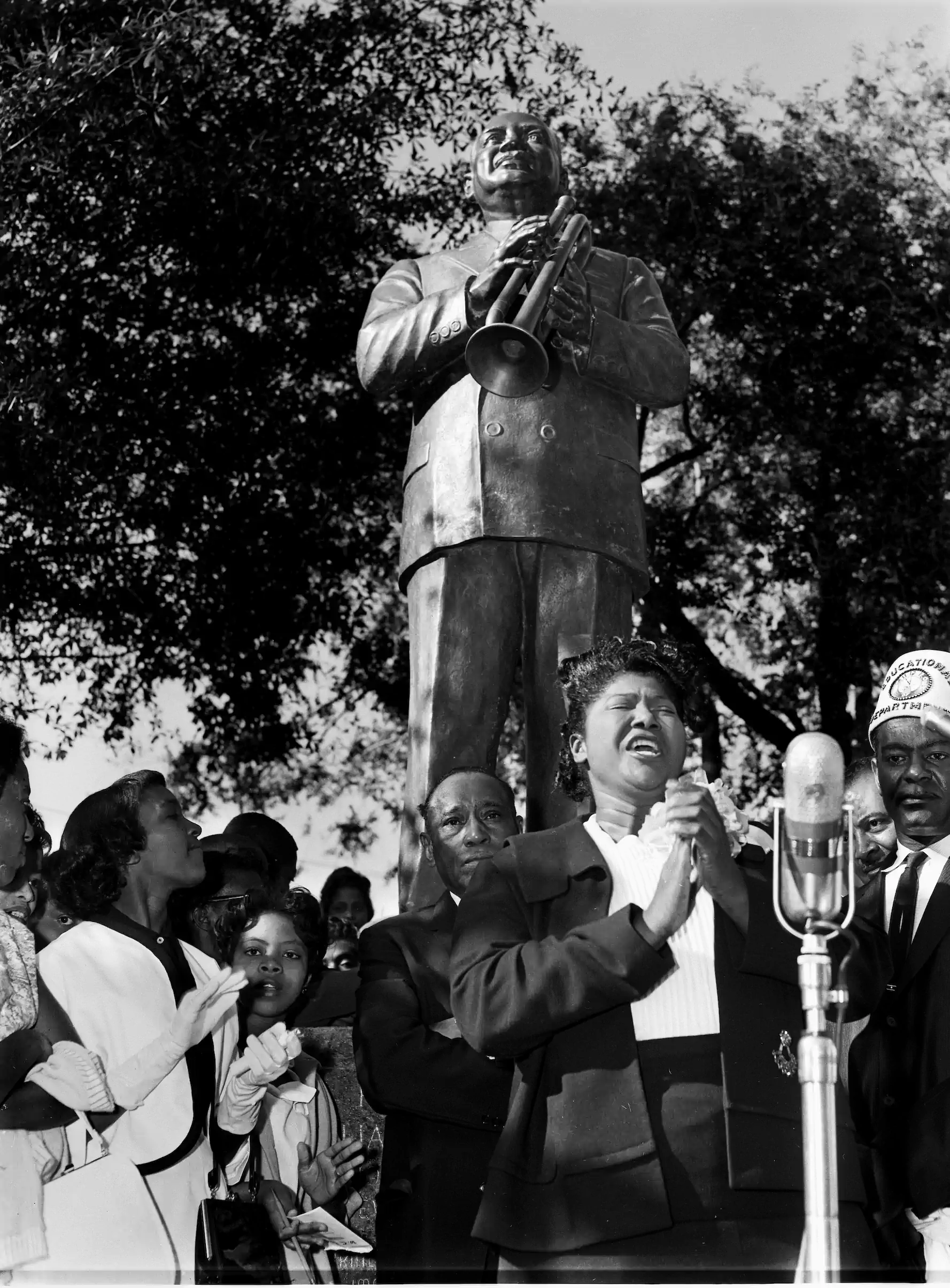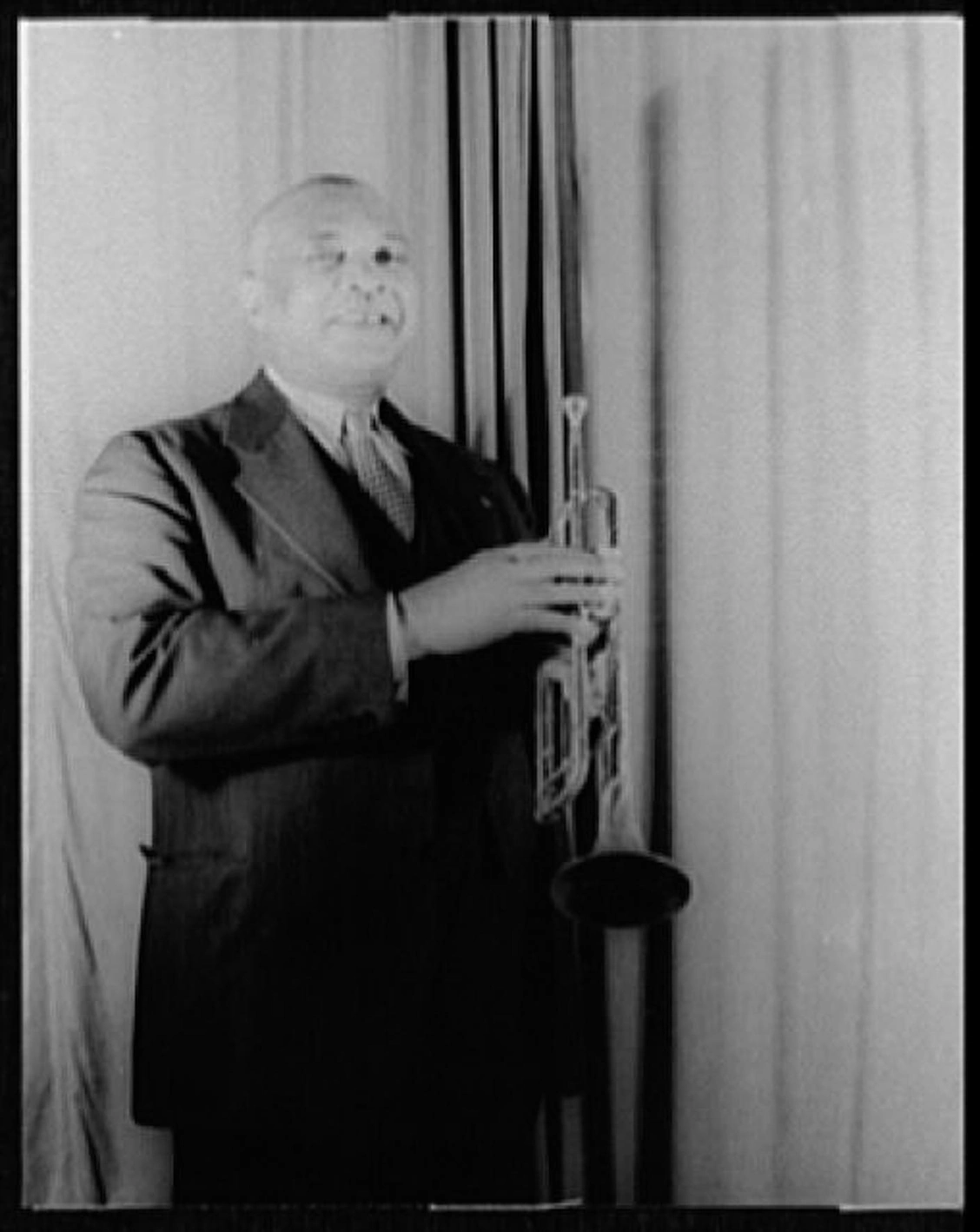A rare musical encounter
The most notable direct connection between Mahalia Jackson and W.C. Handy was manifested in the 1958 film "St. Louis Blues." This musical biopic, loosely based on Handy's life, was released shortly after his death.
Mahalia Jackson's unique role
Mahalia Jackson, known as the "Queen of Gospel," took on her first film role in "St. Louis Blues." This was a remarkable appearance, as she had strictly insisted on singing only gospel music throughout her career and refused to perform blues or jazz. Her participation in this film is a testament to the esteem she held for W.C. Handy and his musical legacy.
Jackson played the role of Bessie May, who was also described as a missionary and a member of the church choir of Reverend Charles Handy, W.C. Handy's strict father. In the film, Bessie May represented the deep roots of African-American music in the church and the tension between spiritual and secular music that shaped Handy's life. Although the film focused on the blues, Mahalia Jackson took the opportunity to showcase her unparalleled gospel singing. She sang the songs "Noah Heist the Window" and "He That Sows in Tears." Although the film was called "St. Louis Blues," Mahalia emphatically stated, "Don't say I sing the blues! I'm a missionary." This attitude reflected her philosophy that blues expresses despair, while gospel offers hope and comfort.
The filming of "St. Louis Blues" was less pleasant for Mahalia Jackson than other film experiences, but she acknowledged that the film "added a new dimension" to her life, albeit at a "valuable cost." Her participation was a highlight of her popular activities in the 1950s.
Mahalia's appearance in the movie
The film's star-studded cast and plot
Directed by Allen Reisner, "St. Louis Blues" brought together an impressive cast of other African-American music legends:
Nat "King" Cole als W.C. Handy
(his only leading role in a movie)
Mahalia Jackson as Bessie May
Eartha Kitt als Gogo Germaine
Cab Calloway as Blade
Ella Fitzgerald - cameo appearance
Pearl Bailey als Tante Hagar
Ruby Dee als Elizabeth
Billy Preston as a young W.C. Handy
(in his first movie role)
The movie tells the story of W.C. Handy, who grows up in Memphis and pursues his passion for the blues against the resistance of his father, a preacher. It chronicles his rise as a composer and the challenges he faces, culminating in his eventual blindness. The film ends with a family reconciliation when Handy's music is performed by a symphony orchestra in New York. The soundtrack was a tribute to Handy's work, featuring over ten of his timeless songs. Although "St. Louis Blues" is not always considered historically accurate, it remains an important document of American music history and offers a unique opportunity to experience many of the era's greatest African-American musicians together on screen. Mahalia Jackson's performance is a particular highlight, underscoring the deep spiritual dimension often found in the blues. It is important to distinguish this film from an earlier, rediscovered short film from the 1920s featuring blues singer Bessie Smith.
These events in Memphis and the cinematic tribute in "St. Louis Blues" interweave the stories of W.C. Handy and Mahalia Jackson in a unique way and show how their legacy continues to shape the American musical landscape.
Mahalia Jackson and W.C. Handy in Memphis
Memphis, Tennessee, was the site of a significant event in American music history in 1958, when Mahalia Jackson participated in a tribute to the late W.C. Handy, the "Father of the Blues." These events highlight the complex but deeply rooted relationship between gospel and blues and honor the legacy of two musical icons.
Mahalia Jackson in Memphis - A tribute to a legend 1958
On August 30, 1958, Mahalia Jackson, accompanied by her secretary Elizabeth ("Butch") Thornton, arrived at Central Station in Memphis, Tennessee. She had come to participate in the "Blues of Glory" tribute to the recently deceased William Christopher "W.C." Handy at Crump Stadium. Handy's death on March 28, 1958, had left a deep void in the music world, and Mahalia Jackson's presence underscored the significance of his legacy.
The inauguration of the W.C. Handy statue in 1960
Just under two years later, on May 1, 1960, Mahalia Jackson returned to Memphis to take part in another memorable event: the unveiling of the statue of W.C. Handy in Handy Park on Beale Street. Pictures of the ceremony show Jackson standing between the statue and master of ceremonies George W. Lee, singing the beloved spiritual "Just a Closer Walk With Thee." It seemed as if the statue of W.C. Handy was listening to the moving voice of the world's most famous gospel singer – a powerful symbol of the connection shared by these two musical giants.

© ZUMA Press, Inc./Alamy
August 30, 1958, Memphis, Tennessee. Arrival at Central Station, together with her secretary Elizabeth "Butch" Thornton (left). Mahalia is the star guest at the "Blues of Gloria" tribute to the late W.C. Handy at Crump Stadium.

© ZUMA Press, Inc./Alamy
May 1, 1960, Memphis, Tennessee. Unveiling of the statue of W.C. Handy in Handy Park on Beale Street. Standing between Mahalia and the statue is George W. Lee, the master of ceremonies.

© FAY 2018/Alamy
W.C. Handy: The "Father of the Blues"
William Christopher "W.C." Handy (1873-1958) was a transformative figure in American music. Born in Florence, Alabama, the son of freed slaves, Handy found his musical roots in church music. Despite initial resistance from his family and the church, he learned to play various instruments, including the cornet. His travels through the Midwest and his encounters with African American folk music shaped his style.
Handy was a trained musician who played a decisive role in popularizing the blues by writing down this previously often orally transmitted musical form and making it accessible to a wider audience. In 1909, he settled in Memphis, where he formed a band that performed on the famous Beale Street and wrote some of his best-known pieces. In 1917, he moved to New York City in search of better working conditions.
Among his most notable achievements was the first performance of blues music at Carnegie Hall in 1928. A year later, his "St. Louis Blues" became the basis for a Hollywood film of the same name. Handy continued to write and publish music, authoring five books on the blues, black folk music, and early African-American composers. Despite losing his sight in 1943, his influence remained immense. Over 25,000 people attended his funeral in Harlem. He was inducted into the Nashville Songwriters Hall of Fame in 1983, and the annual W. C. Handy Music Festival in his hometown of Florence and the prestigious Handy Award honor his legacy.
Zu Handy's best-known works include:
"The Memphis Blues" (1909/1912)
"St. Louis Blues" (1912/1914)
"Yellow Dog Blues" (1912)
"Beale Street Blues" (1916)
His autobiography, published in 1941 under the title "Father of the Blues: An Autobiography," cemented his reputation as a key figure who led the blues from a regional niche form to worldwide recognition.
©Thilo Plaesser